Amazing Rudrakshas
April 30, 2023For a week now the editing team of Hinduism Today has been designing and editing a 12-page article on Rudrakshas, an untold story soon to be told. Our Nepalese writer/photographer flew to the remote valley (just 33 miles from Mount Everest) where Nepal's Rudrakshas are grown and marketed, and hers is a revealing story. Spoiler alert: Nikki reports that the most expensive single bead ever sold went to Chinese buyers for $84,000!
As the story comes together, we are again reminded of our own Sacred Rudraksha Forest and its natural beauties. So sharing some of that today.
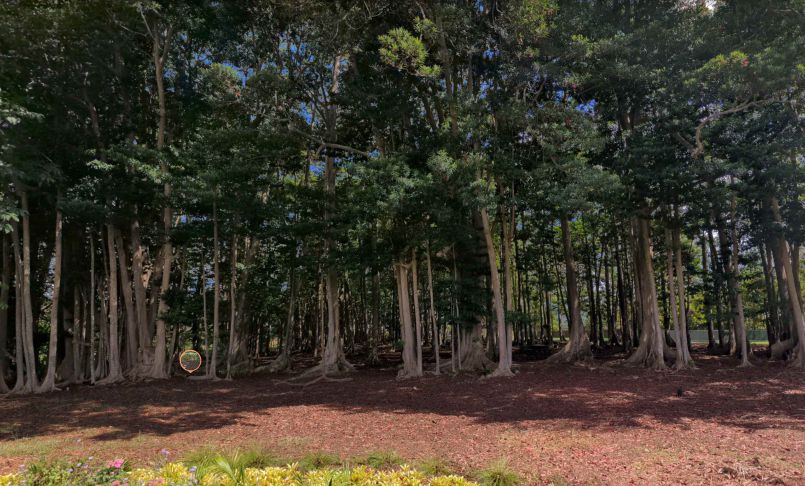
Planted in 1978, the 45-year-old forest is now mature.
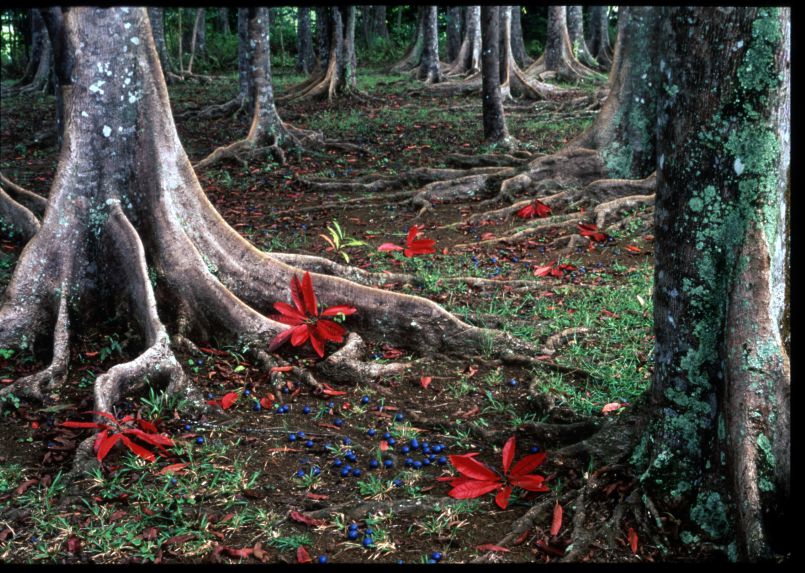
A small percentage of the leaves always turn bright red for unknown reasons. Maybe the tree is just trying to get our attention.
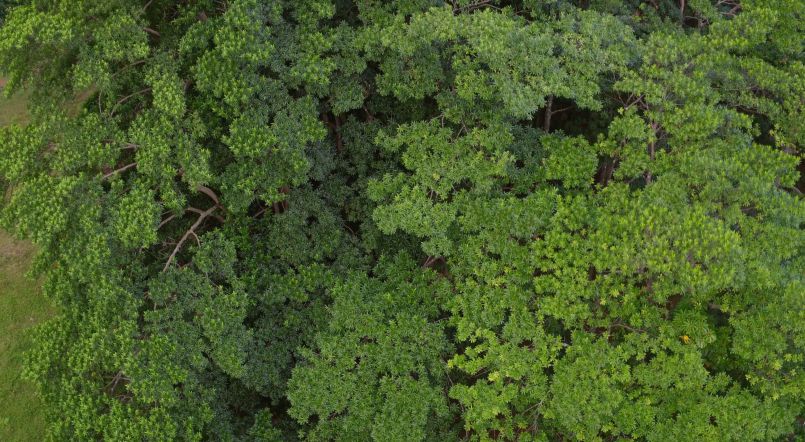
A drone looks down on the tops of the trees.
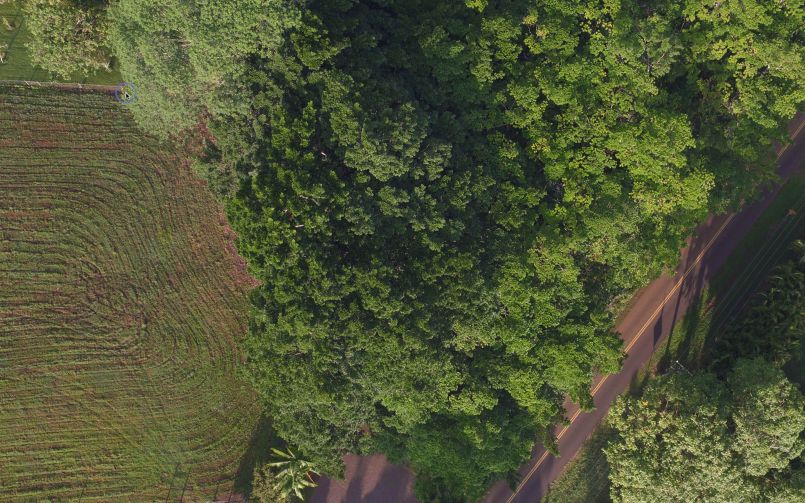
Kuamoo Road passes on the Northern side.
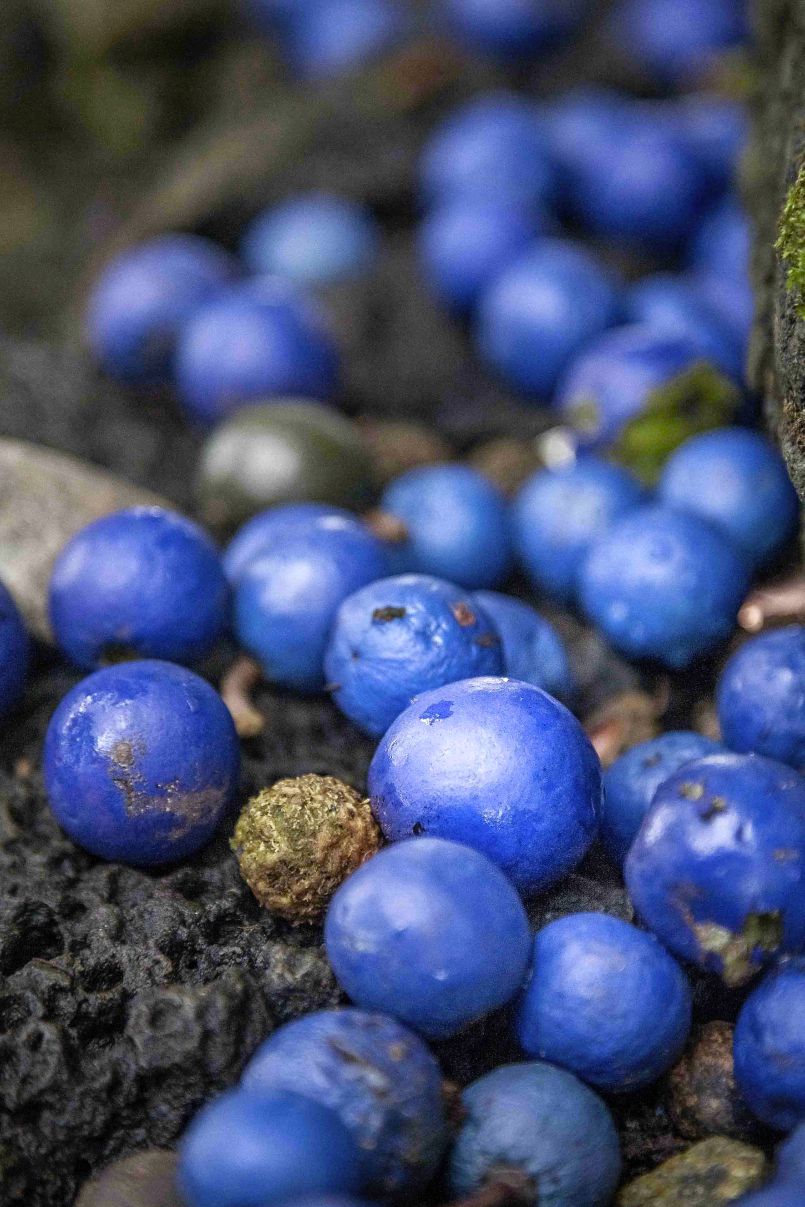
Beads fall and collect seasonally by the hundreds of thousands each year.
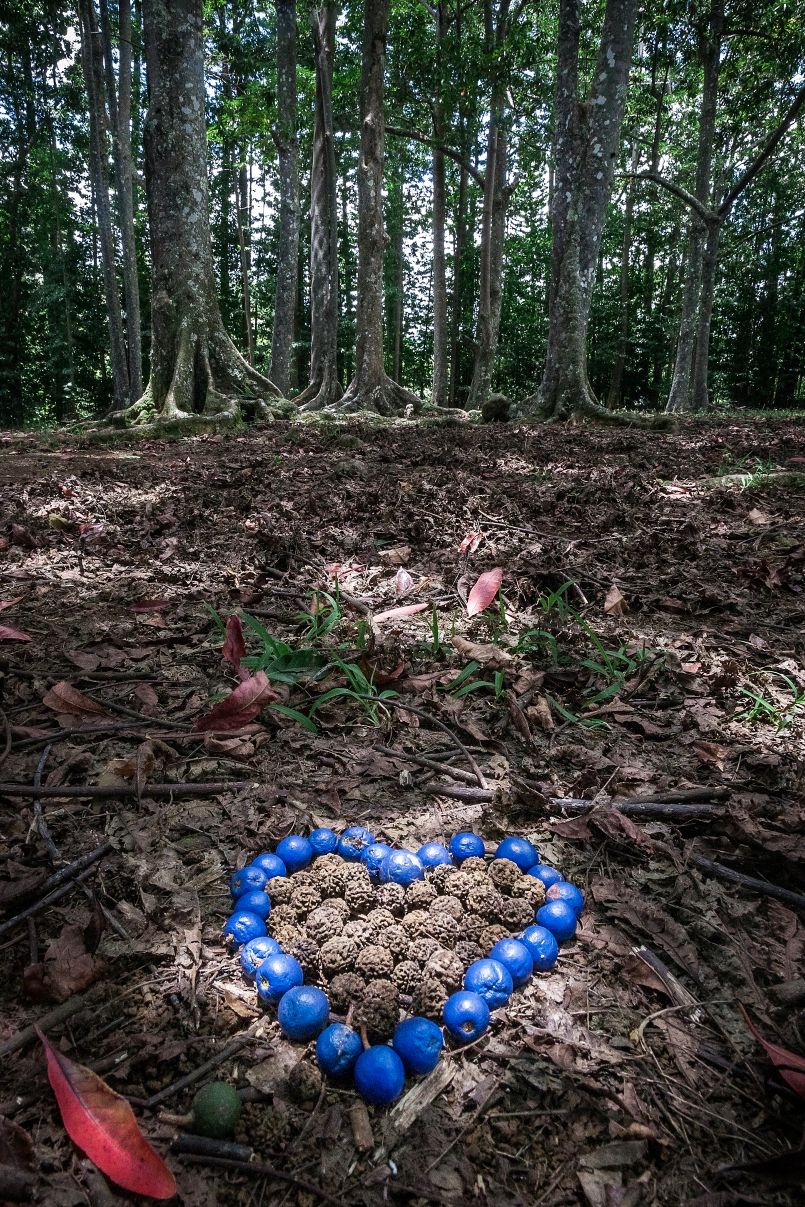
Visitors sometimes leave their own messages.
Recently, a pilgrim from Kuala Lumpur found our very first Gauri-Shankar bead, formed by the merging of two Rudraksha beads, naturally grown together with one stem, representing the unity of Shiva and Shakti.
These buttressing roots are so sculptural, but they have an engineering purpose, to keep the trees stable as they grow.
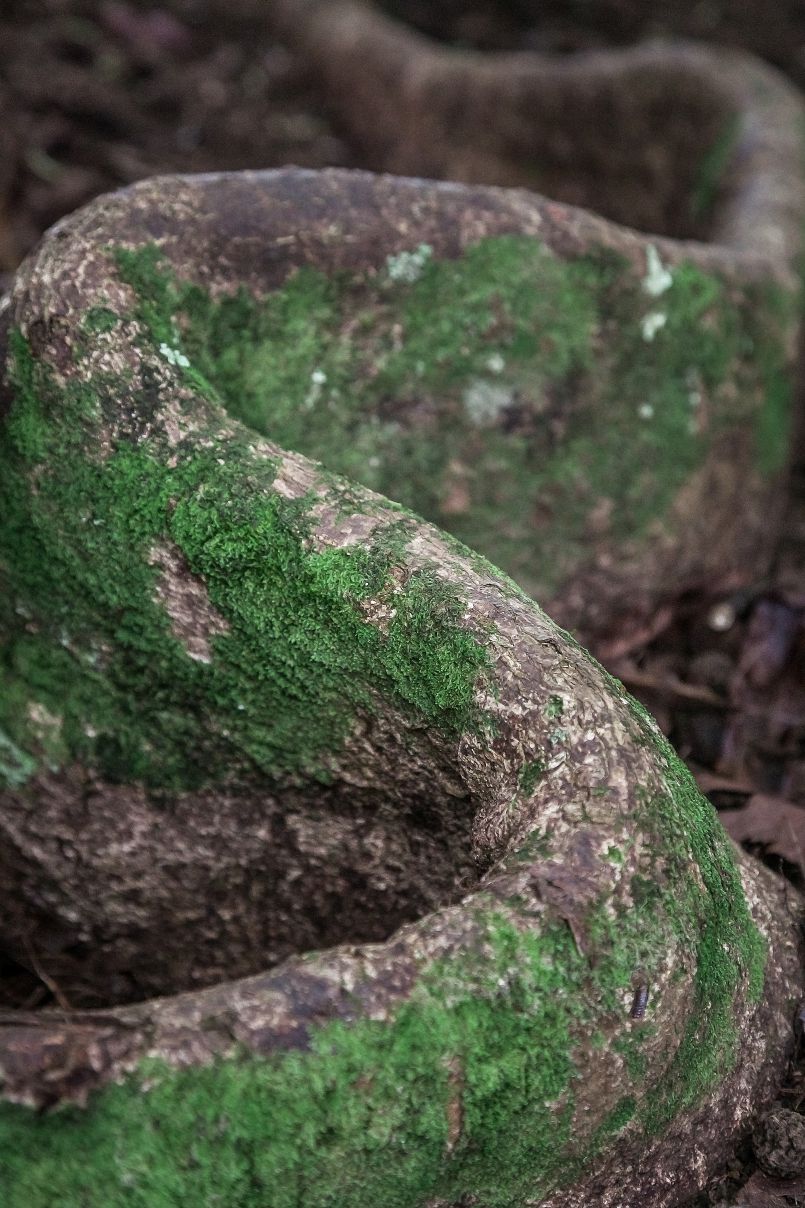
They snake along the forest floor.
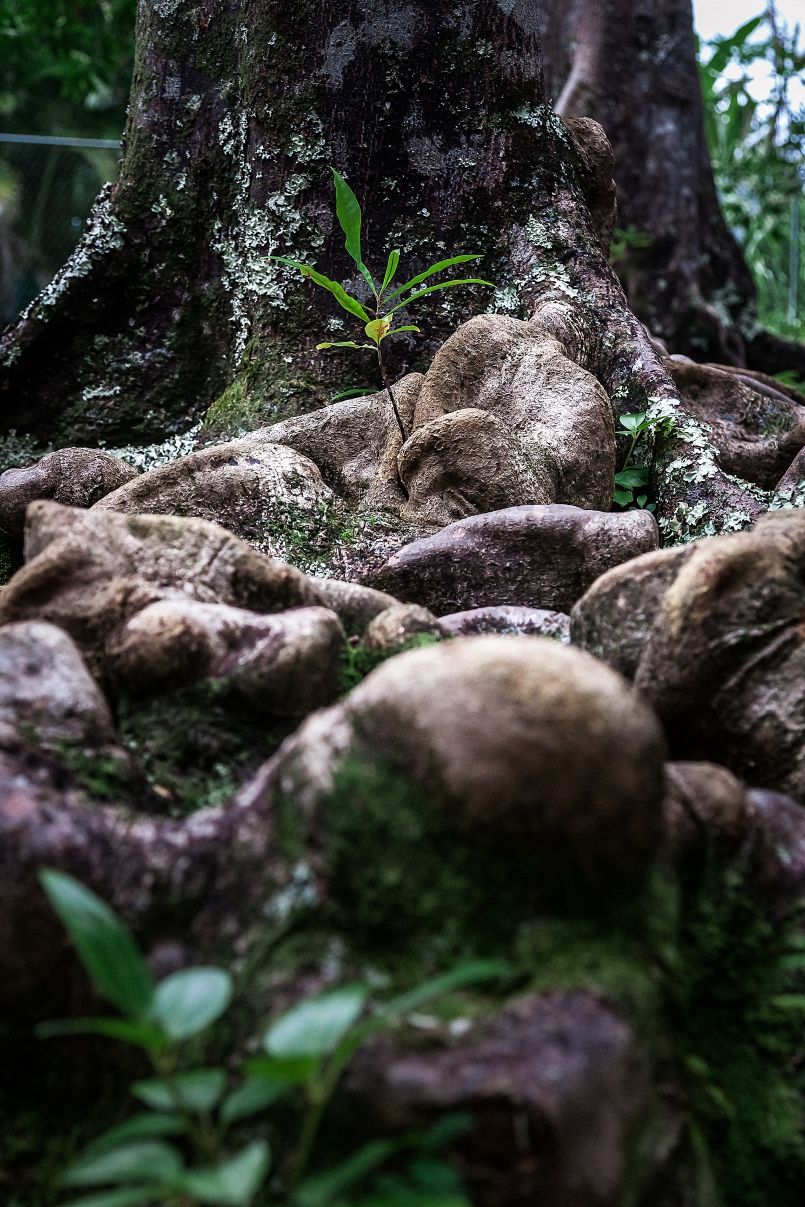
And make hobbit root knots, caused, they say, by bacteria or fungus.
After another 100 years, these buttressing structures will be 15-20 feet tall.
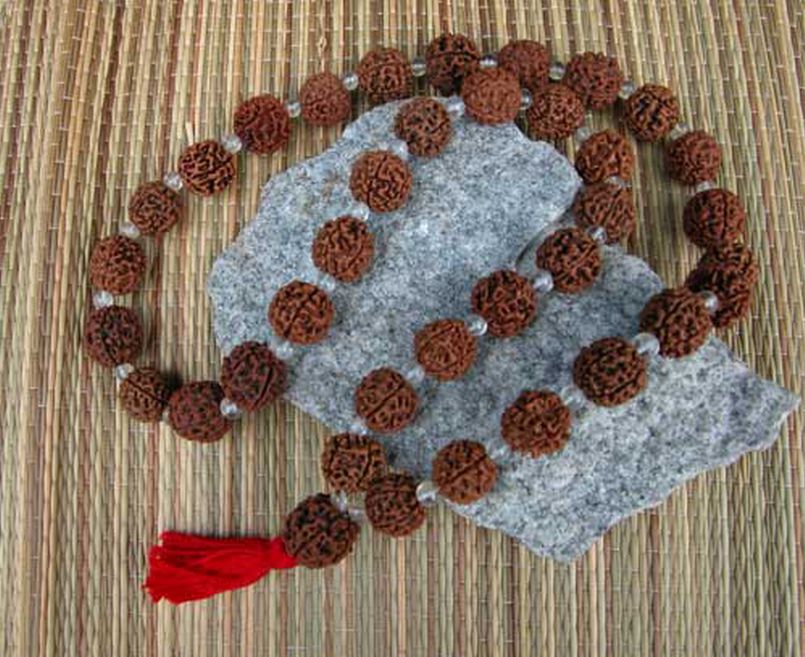
The final product produced by our island Sivathondars. Namasivaya!
}
];